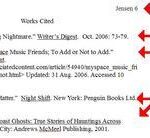To begin writing a legal case brief you should began with the case name and court citation as the title.
Example:
Cruse V. Aden,
20 N.E. 73 (Ill. 1889)
The next step to writing a legal case brief is to title and state the facts. You want to include all pertinent facts. You want to label each section of the brief after the title. The section for the facts you want to label as “Facts”. Here you should write one paragraph of the facts and nothing but the facts. You should include who sued who and what for. Explain the event which caused the suit and under which law the suit was brought to court. Explain how the particular situation of the suit fits into the law it was brought to court under.
Example:
Facts
Julia Ann Cruse sued Adde Aden, her husband’s friend, for serving two alcoholic drinks to her husband; which aided in his intoxication. Mrs. Cruse’s husband, George A. Cruse, was intoxicated when he was killed in a horse-riding accident. Due that Adde Aden served George Cruse two drinks, Julia Cruse said that he was responsible for her loss of financial support under Sections 6 and 9 of the Illinois Dram Shop Act. Section 6 “provides penalty for whoever shall sell or give away liquor to minors, intoxicated persons, or persons in the habit of becoming intoxicated.” Section 9 “gives a right of action to any persons injured in person or means of support in consequence of intoxication, against ‘any person who shall by selling or giving any intoxicating liquors have caused intoxication.'”
After the Facts, the next step to writing a legal case brief is the Procedural History. This section is only included if the case has gone to several courts. If this is the case, you should include which courts the case has gone to and the decision of each court prior to the final result which you are briefing.
Example:
Procedural History
Judgment $800 for Plaintiff by trial court; reversed by appellate court 4th district; Plaintiff appeals to Ill Supreme Court.
After the Procedural History, the next step to writing a legal case brief is the Issues. Include the issues which the court you are briefing the case on had to decide.
Example:
Issues
Whether a person can be held liable for giving alcohol to a friend if they are not selling the alcohol or normally selling the alcohol.
Whether there is penalty for giving alcohol to a strong and able-bodied person.
After the Issues, the next step to writing a legal case brief is the Holding. The Holding includes the decision of each individual issue.
Example:
Holding
Section 9 of the dram-shop act does not apply to people who are not in the business of selling alcohol.
There is no penalty for a person giving alcohol to a strong able-bodied person.
The next step to writing a legal case brief is the Judgment. Here you write the final decision of the court.
Example:
Judgment
The appellate court decision is affirmed.
The final step in writing a legal case brief is the Reasoning. This is where you include the reasoning behind the final decision. These will be the reasons each holding on each individual issue was decided as such.
Example:
Reasoning
1) The dram-shop act mentions people selling liquor for profit
2) The act does not intend to penalize friends who gather and drink socially



